Made famous by Le Cirque restaurant in New York City, pasta primavera is a vegetable-forward pasta that highlights the wonderful flavors and textures of vegetables. Primavera means “spring” in Italian, so typically, spring veggies are used. But I make it year-round for Meatless Monday with seasonal and even frozen vegetables!
Many primavera pasta recipes call for a rich cream sauce, but I favor a light, lemony sauce that relies on a little butter and pasta water for its silky texture and bright flavor. If you want to add a protein, the lemony flavor pairs well with a browned chicken breast or flaky piece of fish, like salmon or flounder. For more quick and easy pasta recipes, try my penne alla vodka, chicken alfredo, and chicken scampi recipe.
What you need to make this recipe
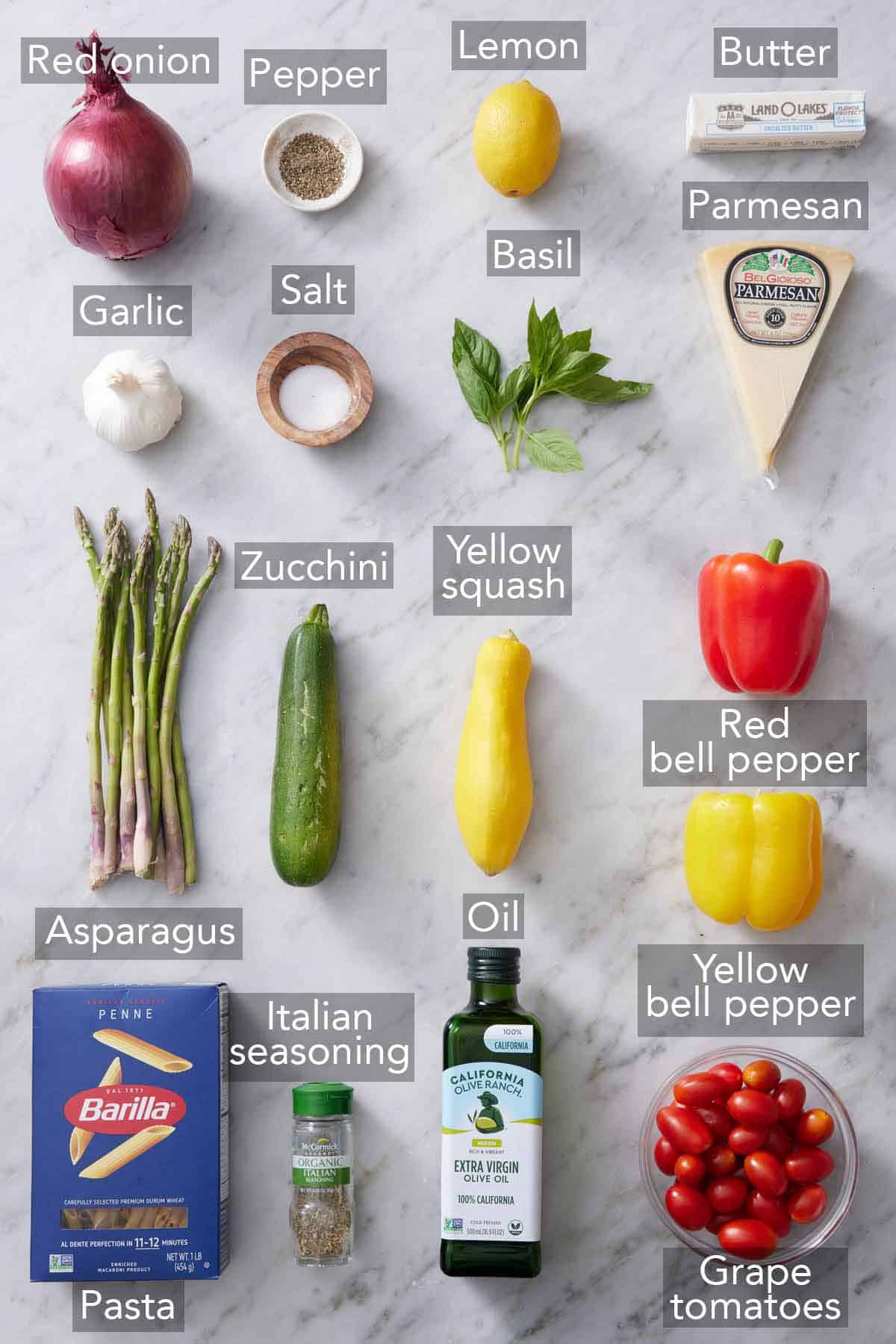
Pasta — short pasta types are my favorite for primavera pasta because it makes it easier to get bite-sized veggies and pasta in every mouthful. Penne is my go-to, but feel free to use rigatoni, ziti, farfalle, or rigatoni. For longer pastas, linguine or fettuccine works well. Your favorite gluten-free pasta works as well!
Onion — a sliced red onion adds savory flavor to this meatless pasta recipe.
Bell pepper — use a red bell pepper and yellow bell pepper for bright color and flavor variety.
Summer squash — choose smaller yellow squash and zucchini as they tend to be less watery.
Asparagus — trim off the tough woody end and cut the stalks into 1-inch pieces.
Garlic — garlic is one of the flavor stars in this vegetable pasta recipe, adding savory depth of flavor, so fresh is best!
Seasoning — you only need Italian seasoning, salt, and ground black pepper for a deliciously flavored pasta.
Grape tomatoes — halve them and toss them in uncooked for a burst of bright freshness and a hint of acidity.
Lemon juice — since the pasta primavera sauce relies heavily on lemon, use fresh lemon juice instead of bottled. You can even toss the juiced rinds into the pot of water with the pasta or add lemon zest to the sauce for more citrus flavor.
Butter — butter combines with pasta cooking water and lemon for a light, silky sauce.
For serving — salty, nutty parmesan cheese and aromatic fresh basil are the perfect finishing touch. Other fresh herbs like chives and tarragon or great additions!
How to make pasta primavera
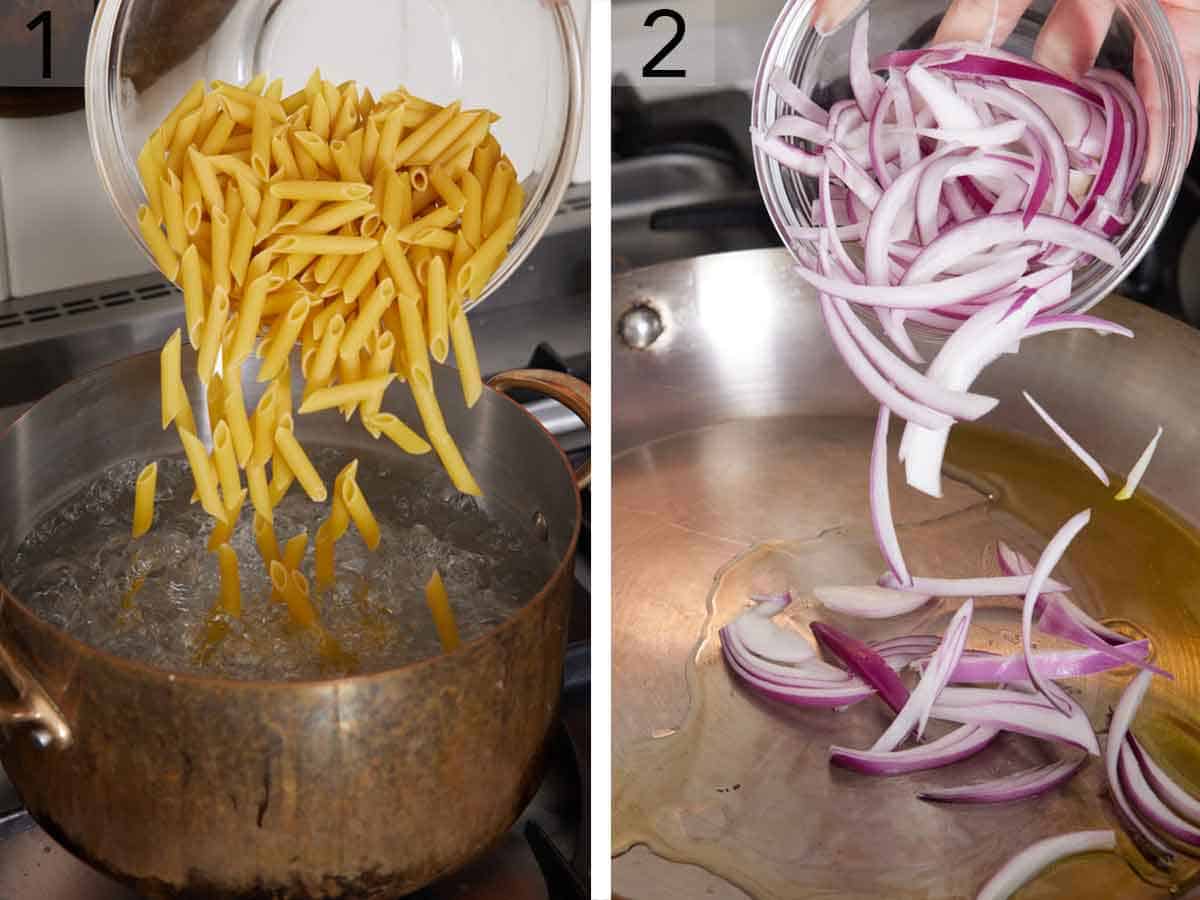
1. Cook the pasta in a large pot of water, well salted, according to package directions. Reserve ½ cup pasta water and drain the rest before returning the pasta to the pot.
2. While the pasta cooks, work on the vegetables. Heat olive oil in a large skillet over medium-high heat. Add the sliced red onion and cook for 2 minutes.

3. Drop in the sliced bell peppers and chopped asparagus and cook for another 2 minutes.
4. Next, in go the yellow squash, zucchini, and minced garlic. Cook for another 2 to 3 minutes.
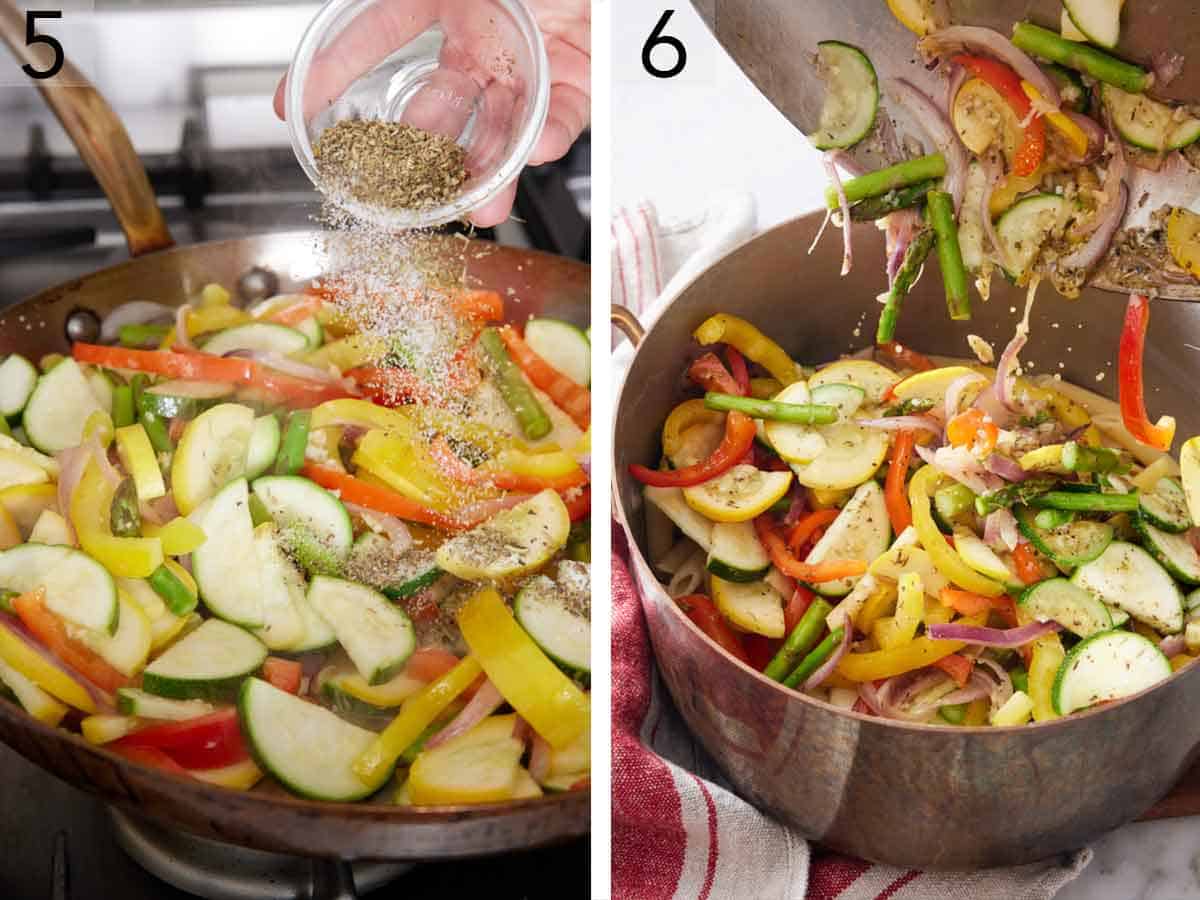
5. Season with Italian herbs, salt, and pepper, and remove from the heat.
6. Add the cooked veggies to the pot containing the cooked penne pasta.
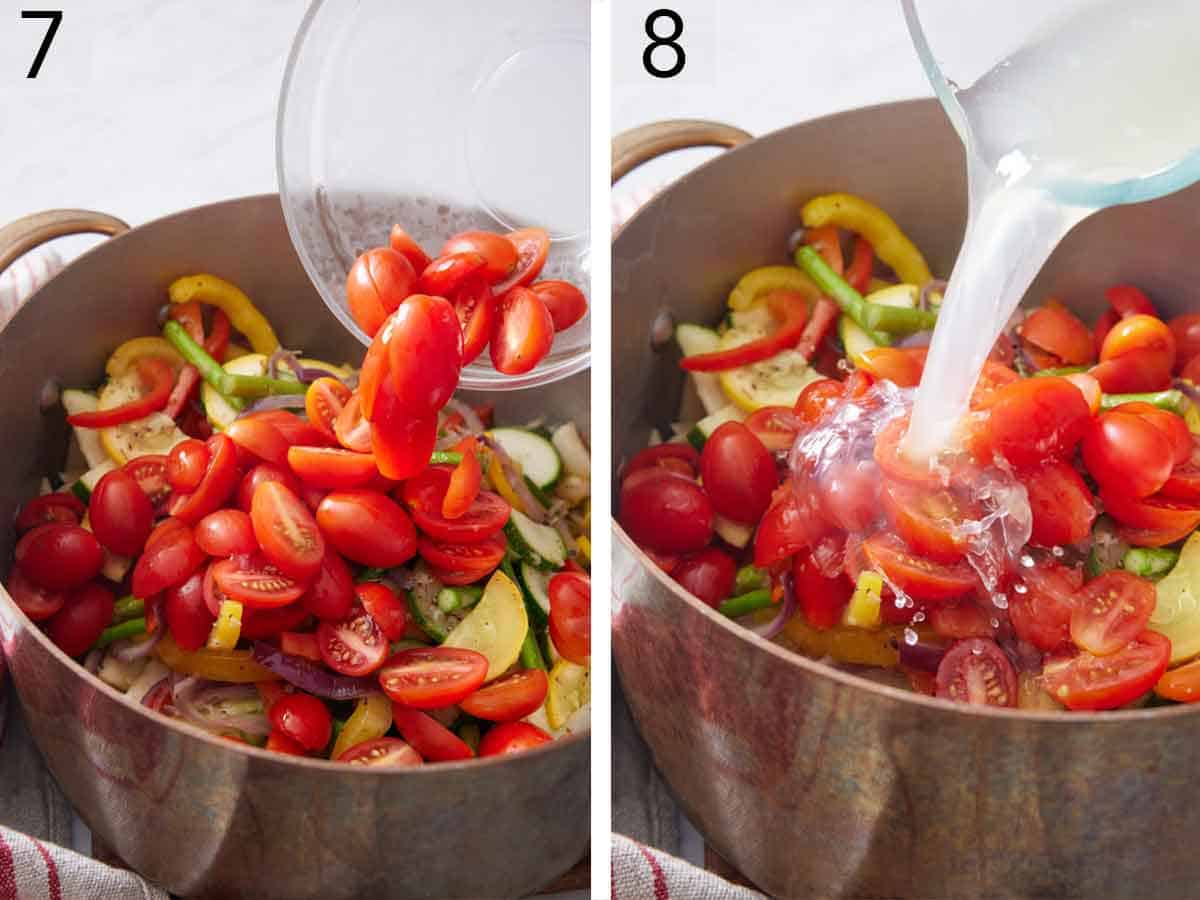
7. Drop in the halved cherry tomatoes.
8. Pour in the reserved pasta water.
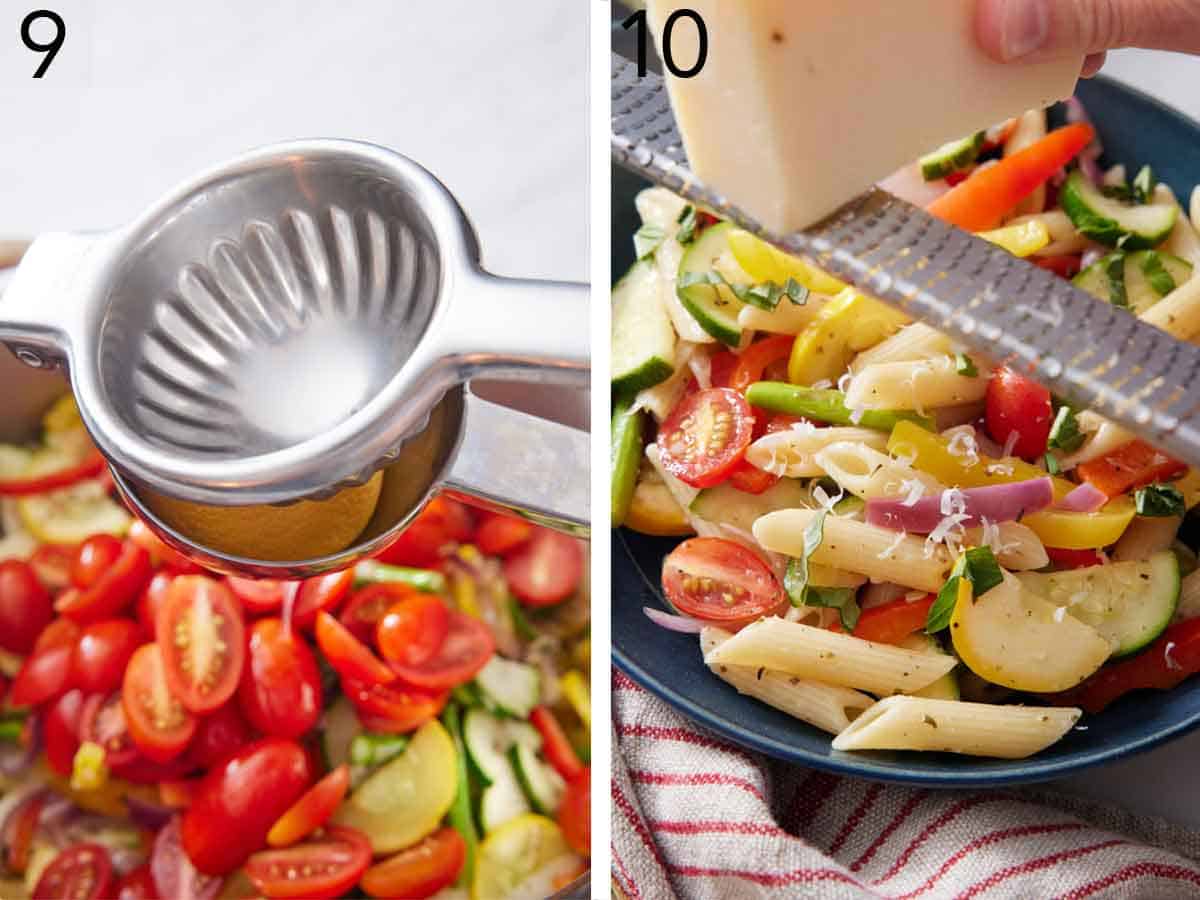
9. Add the fresh lemon juice and unsalted butter and stir gently until the butter has melted. Place over medium heat if the butter isn’t melting quickly.
10. Serve immediately topped with grated parmesan cheese and chopped fresh basil.
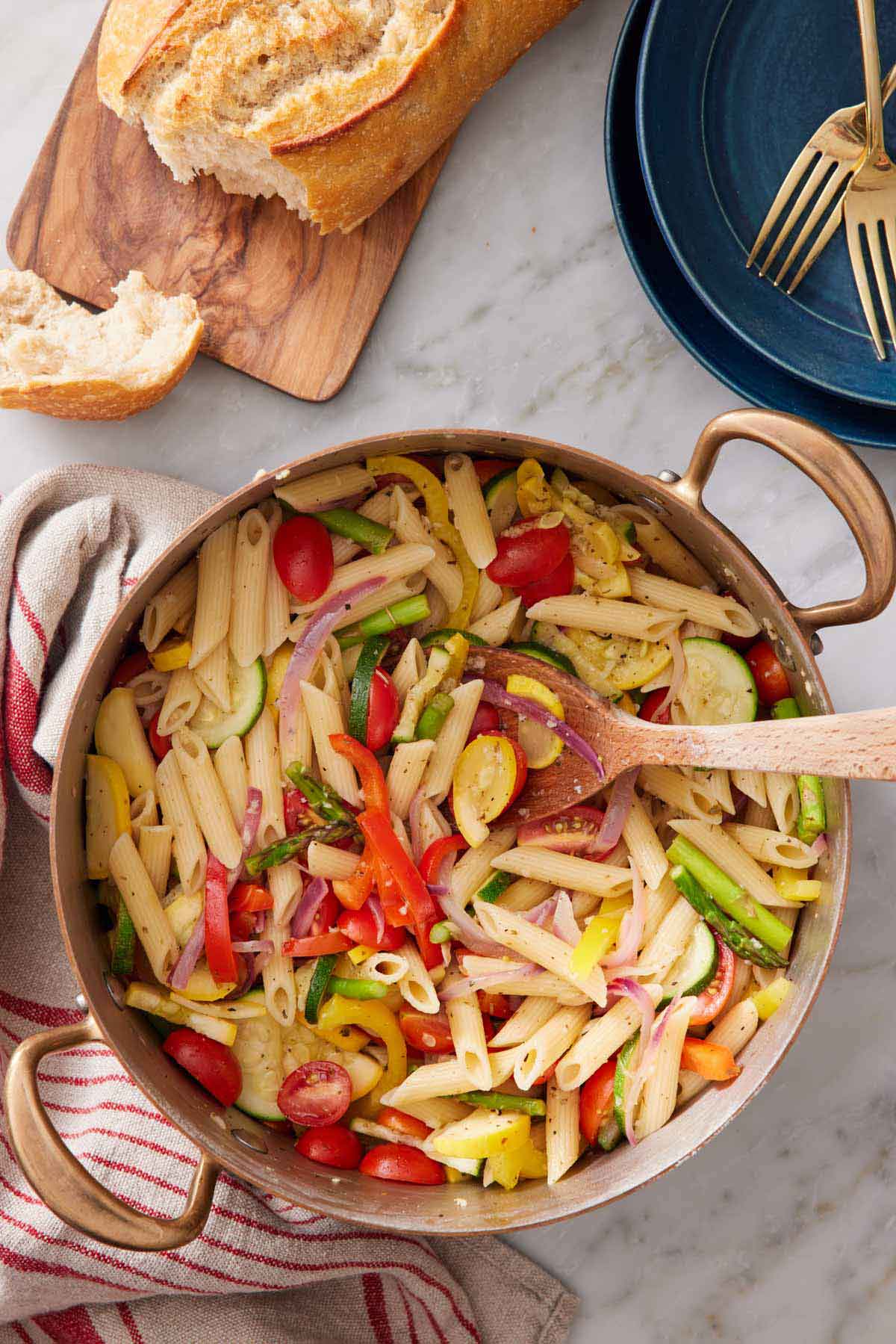
Pro tips for making this recipe
- Don’t overcook the pasta. Mushy pasta is never ideal, so cook the pasta until it is al dente, meaning it is tender with a bit of bite. Al dente pasta will continue cooking once tossed in sauce.
- Salt the pasta cooking water generously. This adds flavor to the pasta that you can’t make up for if cooked without salt. Generally, I use 1 tablespoon of salt per 12 cups of water.
- Don’t overcook the fresh vegetables. Veggies should be cooked until they are crisp-tender and still brightly colored, not mushy.
- To save time, cook the vegetables while the pasta cooks. This way, everything is hot at the same time, and the vegetables don’t soften too much by having to be reheated.
- Grate fresh parmesan cheese from a block. The stuff that comes in a tub just can’t compare with the taste of freshly grated parmesan. A microplane or the small holes of a box grater work well for grated parmesan cheese at home.
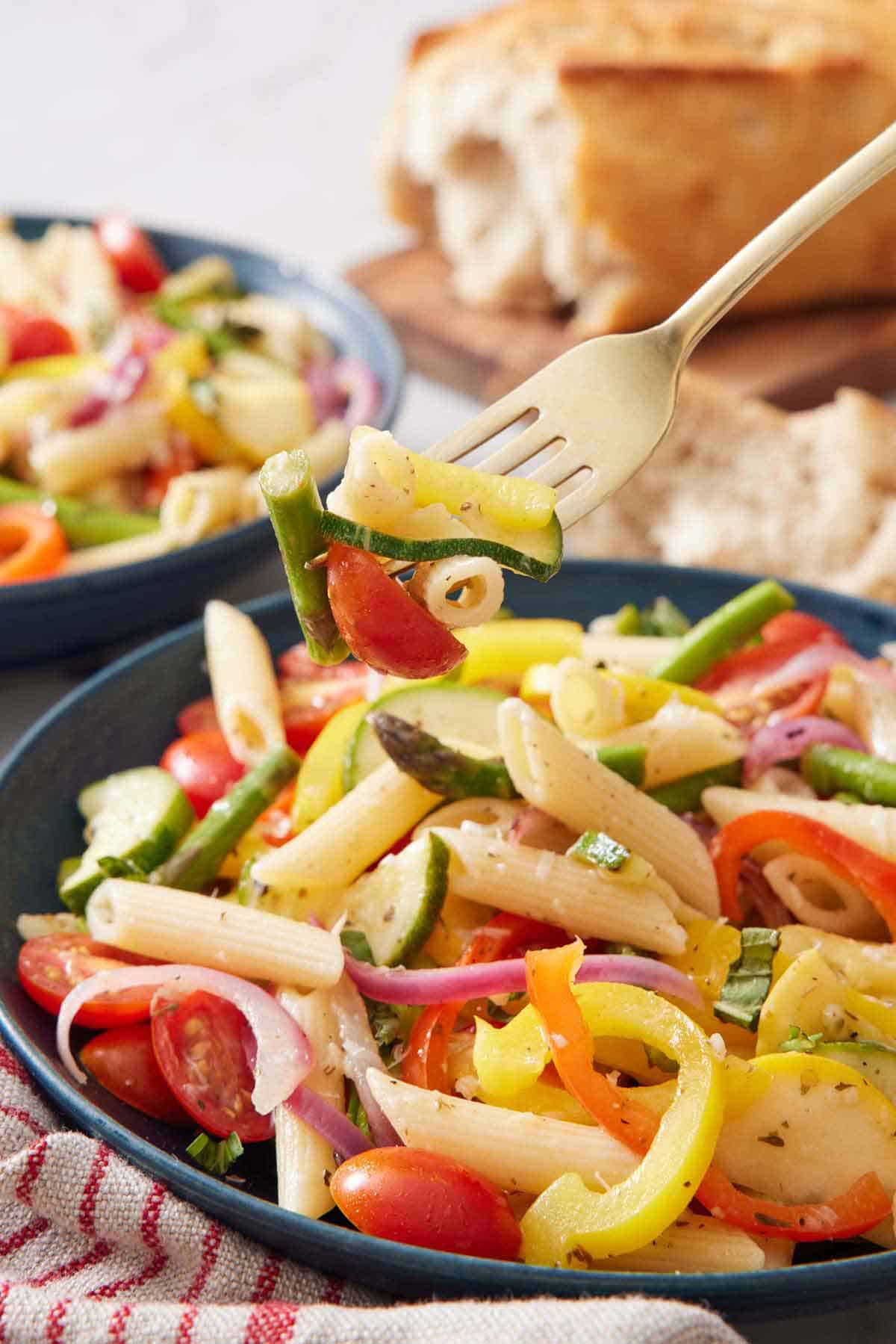
Frequently asked questions
Spring vegetables are most often used in this vegetable pasta recipe, but I typically use whatever I have in my refrigerator! It keeps things interesting because my primavera pasta is always different. Some other vegetables you could use are green beans, snap peas, mushrooms, thinly sliced carrots, frozen peas, frozen corn, and spinach. If you decide to use a very tender veg like spinach, add it at the very end, just to give it about a minute to wilt.
It’s very easy to make chicken pasta primavera or shrimp pasta primavera with this recipe. Just throw in some leftover sliced air fryer chicken breasts when tossing the pasta and vegetables together, or make quick sautéed shrimp
or garlic shrimp to serve over the top.
This veggie-heavy spring pasta is very substantial and doesn’t really need a side dish! However, I will sometimes add a side of crunchy garlic bread to wipe up any leftover sauce on the plate or start with a fresh avocado salad before serving the pasta. Or, if you want to add some protein, add seared scallops or baked chicken thighs to each serving.
Once cooled completely, transfer pasta primavera to an airtight container. It will keep well for up to 4 days. Reheat it on the stovetop in a saucepan, or enjoy leftovers cold, sort of like a vegetable pasta salad!
If you’ve tried this pasta primavera recipe, then don’t forget to rate it and let me know how you got on in the comments below. I love hearing from you!
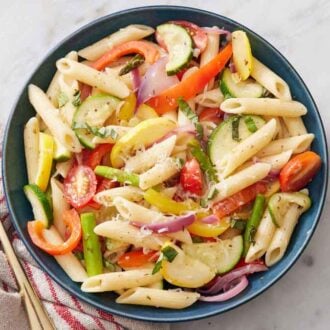
Pasta Primavera
Video
Ingredients
- 10 ounces penne pasta (284g)
- 2 tablespoons olive oil
- ½ small red onion sliced (94g)
- 1 small red bell pepper seeded and sliced (162g)
- 1 small yellow bell pepper seeded and sliced (147g)
- 1 small yellow squash halved and sliced (169g)
- 1 small zucchini halved and sliced (185g)
- 12 stalks asparagus chopped (131g)
- 4 cloves garlic minced
- 2 teaspoons dried Italian herbs
- 1 teaspoon salt
- ½ teaspoon ground black pepper
- 1 cup grape tomatoes halved (174g)
- 3 tablespoons fresh lemon juice
- 2 tablespoons unsalted butter
- ½ cup grated parmesan cheese for serving (40g)
- ¼ cup chopped fresh basil leaves for serving
Instructions
- Bring a large pot of salted water to a boil and cook the pasta according to package directions. Drain the pasta, reserving ½ cup pasta water. Return pasta to pot.
- While the pasta is cooking, heat the oil in a large skillet over medium-high heat. Add the onion and cook for 2 minutes. Add the bell peppers and asparagus and cook for 2 minutes more. Add the squash, zucchini, and garlic and cook just until they start to turn tender, about 2 to 3 minutes. Stir in the Italian herbs, salt, and pepper. Remove from the heat.
- To the pot with the drained cooked pasta, add the cooked vegetables, tomatoes, reserved pasta water, lemon juice, and butter. Stir gently until the butter melts. Serve immediately with parmesan and basil.
Notes
- Don’t overcook the pasta. Mushy pasta is never ideal, so cook the pasta until it is al dente, meaning it is tender with a bit of bite. Al dente pasta will continue cooking once tossed in sauce.
- Salt the pasta cooking water generously. This adds flavor to the pasta that you can’t make up for if cooked without salt. Generally, I use 1 tablespoon of salt per 12 cups of water.
- Don’t overcook the fresh vegetables. Veggies should be cooked until they are crisp-tender and still brightly colored, not mushy.
- To save time, cook the vegetables while the pasta cooks. This way, everything is hot at the same time, and the vegetables don’t soften too much by having to be reheated.
- Grate fresh parmesan cheese from a block. The stuff that comes in a tub just can’t compare with the taste of freshly grated parmesan. A microplane or the small holes of a box grater work well for grated parmesan cheese at home.




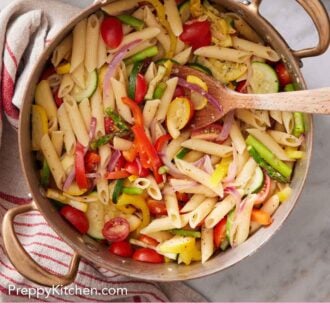

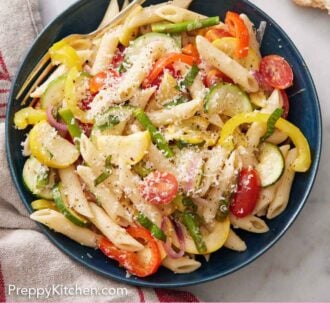
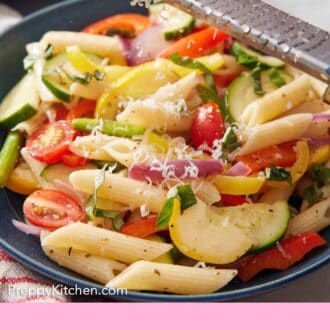
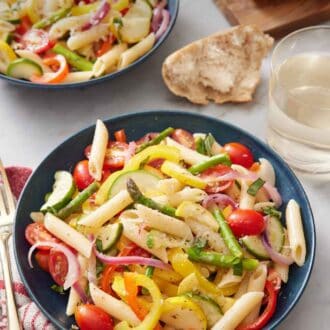
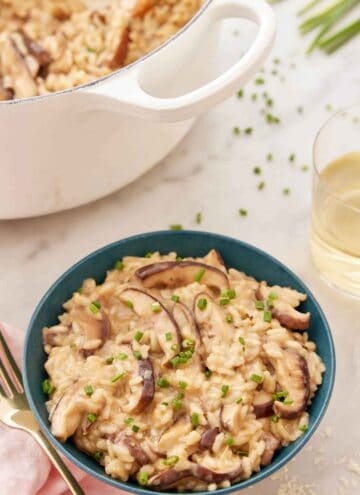

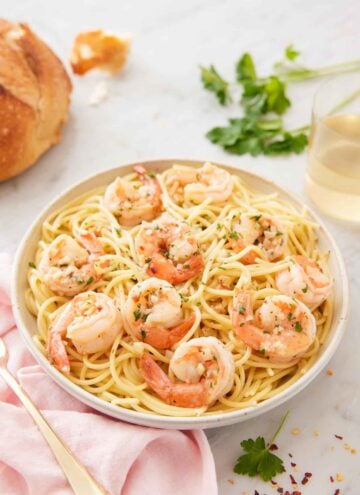
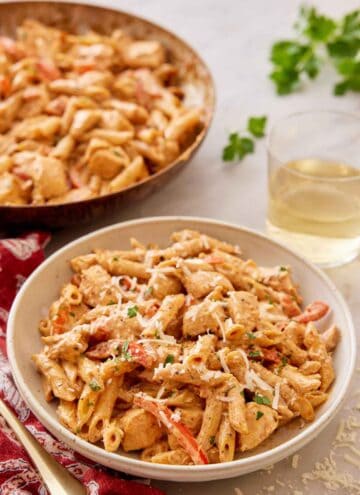
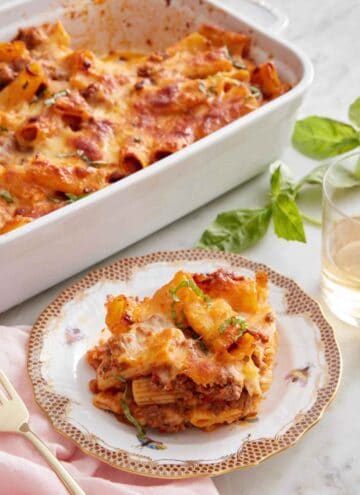
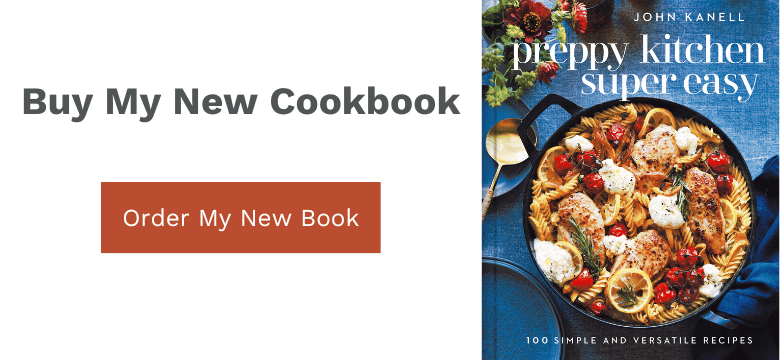
Michele says
This pasta primavera dish is the best I’ve ever had! It’s fresh, flavorful, and healthy, making it a staple in my home.
Rita says
Love, love so much this light Pasta Primavera…absolutely delicious and easy to prepare!
Neil Pelser says
Looks DELICIOUS!